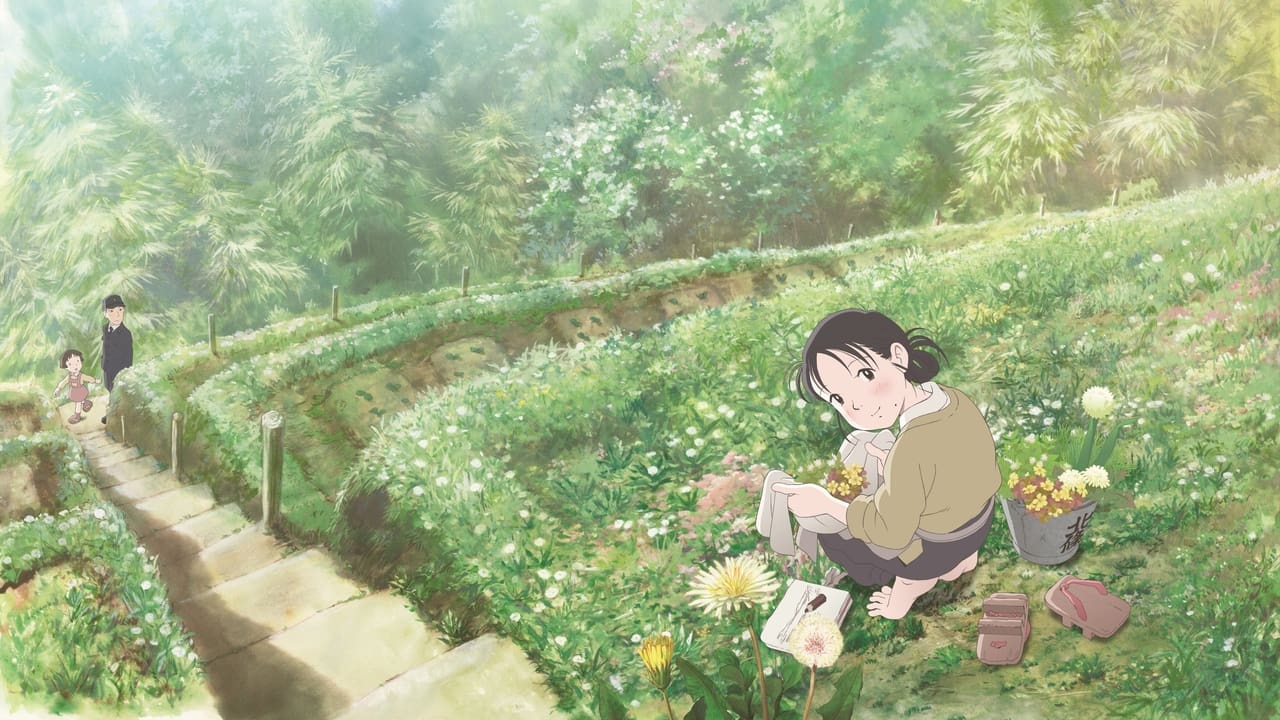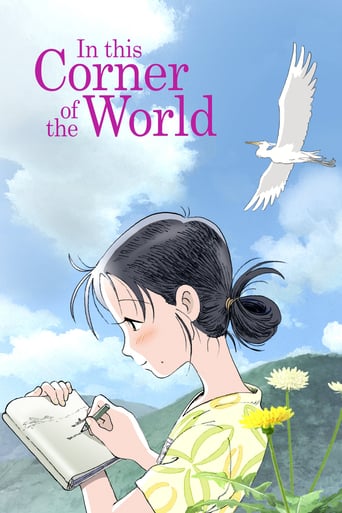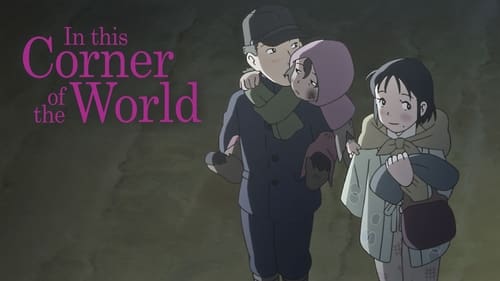



not horrible nor great
Close shines in drama with strong language, adult themes.
View MoreOne of the film's great tricks is that, for a time, you think it will go down a rabbit hole of unrealistic glorification.
View MoreStrong acting helps the film overcome an uncertain premise and create characters that hold our attention absolutely.
View MoreJapanese animation commonly use World War II as a backdrop for their characters enriched with traditionalisms and virtuous optimism, Ghibli are renowned for it with 'Grave of the Fireflies' and 'The Wind Rises'. Katabuchi manages to encapsulate a coming-of-age drama with historical significance resulting in a hauntingly resonating experience, albeit occasionally stumbling with its own sporadically structured narrative. A young woman is forced into marriage and moves from her rural family village to the bustling city of Kure where she must learn to overcome adulthood amidst the chaos of war. Admirably, what sets this apart from similar dramas is the nuanced undertone of diligence. Chronicling a large portion of one female's life, thrusted into an unadjusted foreign environment, we see this character develop from an innocent girl who loves drawing landscapes to a hardworking woman who tackles ordinary chores. Suzu becomes a commendable personality, a microcosm representing the civilians of Japan and their enduring communal spirit. The animation is gorgeous. Ranging from hand drawn characters expressively showing their emotions to water coloured landscapes depicting the natural beauty of Japan. Various animation changes are injected throughout, particularly during a pivotal scene involving the tragic loss of a child. It is moving in parts, especially the third act, where key events during the war take place such as the Hiroshima bomb explosion. The excess violence is substituted for a more gentle approach, however there are specific frames that illustrate the brutal effects of war. Unfortunately, Katabuchi's narrative structure seems haphazard, as if he is purposefully attempting to convey Suzu's absent mind. Many scenes do not naturally flow and the constant time shifts made the pacing incredibly inconsistent. It just felt unnecessarily frantic. In saying that though, the majestic art style and thematic story certainly negate these detriments.
View MoreGiving the highest rating, because this movie touches on difficult and seldom discussed topics in disarmingly charming tone. Life of Japanese civilians during the war is only the first one of this topics, you will see. This movie is about a serious story and does not attempt to amuse audience with superficial plot twists. Do not expect a children's cartoon, though it's subdued enough to not offend a younger audience.
View MoreGreetings again from the darkness. There is something hypnotic about the hand-drawn animation of writer/director Sunao Katabuchi's film based on the 2007-09 Japanese manga (comic) by Fumiyo Kouno. With some similarities to Takahata's 1988 classic Grave of the Fireflies, it's more than a wartime drama – it's a story of the human spirit.It's 1935 and Suzu is a young girl who lives in Eba, a town in Hiroshima. She is an exceptional artist with a vibrant imagination and an adventurous approach to life. Her innocence and pleasant childhood existence is rocked when, as a teenager, she receives an out-of-the-blue marriage proposal from a stranger. Life with his family in Kure forces Suzu into a daily routine of cleaning, mending and cooking – all while longing for her family in Eba. The film clicks through the months and years, and provides a history of war time from the perspective of a family and village. While the date of August 6, 1945 hovers on the viewer's mind, we experience how family dynamics are affected by war time. For Suzu, her daily routines such as food preparation provide a necessary structure and distraction, despite the ever-worsening shortage of food and supplies. These stresses are compounded by air raid warnings over the radio and Suzu suffers through vivid nightmares.We so easily connect with Suzu as she continually fights through hardships – both physical and emotional – because of her determination to live a good life and overcome all obstacles. This is such expert story telling with a beautiful presentation, that the film periodically reminds us that war is close by. Even in a war torn country, the people must find a way to go about daily life while treasuring the rare moments of joy and understanding the strength of togetherness. It's rare that an animated movie can deliver such a humanist look at fully formed characters and their feelings all within a historical setting.
View MoreI have previously seen the harrowing Japanese anime Grave of the Fireflies (1988) which depicted the horrors of World War II on Japanese civilians. This brilliant film remains the only Studio Ghibli film to not be distributed by Disney – it was too disturbing for them. With In This Corner Of The World we have a new take on the subject of life in wartime Japan. While this one did not have the impact of the earlier movie for me, it was still a very impressive bit of work. It specifically follows a family in the year leading up to the 6th of August 1945 when the Enola Gay dropped the atomic bomb on the city of Hiroshima. The action, however, takes place in Kure, a city nearby.The war is very much in the periphery of the story. Ominously hovering in the background with battleships silently moving into the harbour, military police active on the ground and air raids occurring regularly by the American military. While the horrors of war do escalate, much of the run-time is devoted to the family drama and this is perhaps the one weakness of the film, as the domestic drama isn't entirely compelling and a bit meandering. It means that we don't get as involved with the characters as much as we should and it could perhaps have been trimmed down a little at the very least. However, this negative has to be offset by the positive in the way that the story does examine the lives of ordinary people during this time. We also have the constant advance of time towards what we know to be that fateful August day and knowing what is to come actually generates even more tension than not knowing. When the moment finally arrives, it is understated in a way that is incredibly sinister. A silent white flash, a tremor and then a huge odd-looking cloud in the distance. It is a far cry from the usual way in which nuclear strikes are depicted in films but its very distance and unspectacular presentation creates a curious melancholic and depressing feeling which was quite powerful I thought. The artwork throughout is beautiful – this is a film which could easily pass itself off as a Ghibli product – and it doesn't pull its punches when it depicts some of the horrors of the aftermath of the 'new bomb'. Overall, this is another powerful and artistically strong bit of animation from Japan.
View More